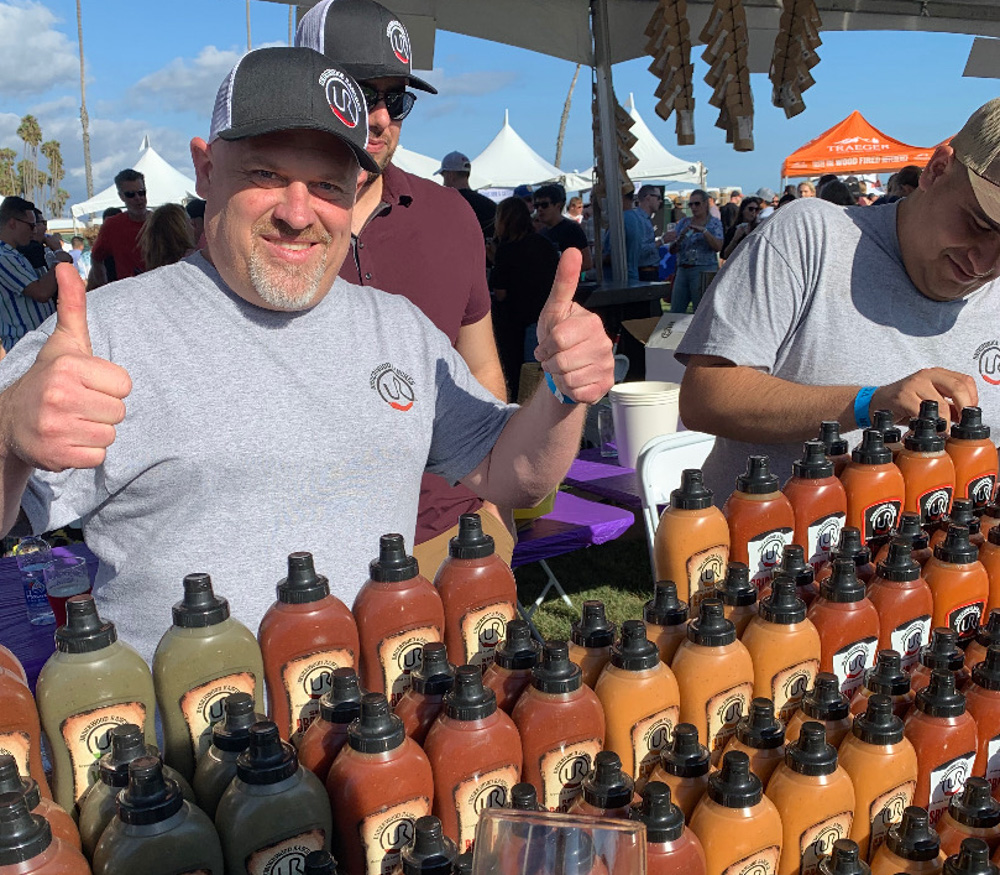Underwood Ranch’s Seed-to-Sauce Formula
Ventura County Pepper Farmers Who Powered Sriracha’s Popularity Now Make Own Hot Sauces

Lima beans, walnuts, lemons, broccoli, baby carrots — there’s not much that the Underwood family hasn’t grown since putting down roots in Ventura County back in 1867. But it was the family farm’s mastery of jalapeños that fueled the recent decades of success, specifically by developing varieties whose peppers stayed spicy upon turning the usually sweeter red color.
That’s exactly what Huy Fong Foods needed in the early 1980s, when founder David Tran began building his sriracha hot sauce empire. Nearly 30 years later, Underwood Ranch was growing about 2,000 acres of jalapeños across Ventura and Kern counties solely for Huy Fong, powering a meteoric rise that made the green-topped, rooster-adorned bottles ubiquitous in grocery stores and restaurants of all cuisines.
But then the relationship suddenly imploded in fall 2016, when Huy Fong abruptly canceled all pepper orders, causing Underwood to lay off 44 employees. While lawyers went to war — Underwood Ranch was awarded $23.3 million after a unanimous jury verdict earlier this year, but Huy Fong’s appeals continue — the family decided to turn the divorce into an opportunity.
“We decided it was time for us to start making our own sauces,” explained Thomas Walsh, who’s worked in sales for Underwood since 2009 but, as a lifelong cook, happily took on the challenge to create the sauces. “We understand the sauce business is very competitive, but being who we are, we figured we had a story to tell.”
This past August, Underwood Ranch released its own line of hot sauces with six different flavors, from Sriracha and Spicy BBQ to mustard-infused Carolina Gold and Korean-inspired Bibimbap. Unlike most hot sauces on the market, they are all made without artificial preservatives and with fresh ingredients rather than dried powders. And they are all distinctly delicious, as I’ve found them perfect partners to Mexican meals and Asian noodles, cold sandwiches and grilled meats, and even just raw veggies.
Walsh developed the recipes largely in his home, though the sauces are now made at a facility in Camarillo. “The trick is getting the flavor you want and making it shelf-stable,” he said, explaining that he had to cook the ingredients in order to not use preservatives and then ran endless tests on pH levels. “Most chefs can make something taste great today or tomorrow, but making it last in an ambient temperature is a whole different ball game.”
Since launching in Texas and Northern California this summer, Walsh has been focused on growing support in Ventura, Santa Barbara, and points south, and recently unveiled a smaller 11-ounce bottle to make for cheaper shipping. “We want to be in every restaurant,” said Walsh. “We want chefs to give our sriracha a chance.”
The sauces’ base remains those special Underwood peppers. “Every one is grown in Ventura and Kern counties,” said Walsh. “We are truly seed-to-sauce. There’s really nobody else that can say that.”

The Hot Sauce Lineup
Sriracha: A straight-up challenge to their former business partner, this carries the familiar red spice and vinegar tang flavors that were originally popularized in Thailand, but without the preservatives found in other versions. It also uses fresh rather than dried garlic.
Spicy BBQ: “The key with our barbecue sauce is that there is absolutely no tomato in that product,” said Walsh. “It’s simply red jalapeño flavor, and that makes it truly unique.”
Carolina Gold: This pairs the pepper heat with mustard flavors to produce a delicious condiment and marinade. “Try it on French fries,” said Walsh. “It’s really good on simple things”
Roja: A special hybrid pepper developed by Underwood is roasted to produce this sauce’s smoky touch. “It’s sweet in the front of the mouth, and then the heat hits you in the back,” explained Walsh of their hottest sauce. “But it’s still all jalapeño. We don’t go crazy with ghost pepper or Carolina reaper. We want a pleasurable experience.”
Verde: Even when most peppers turn red, said Walsh, “You still get green peppers on the plant, and we don’t want to throw them away.” So he chars them to make this very basic, jalapeño-highlighting green sauce.
Bibimbap: A consulting chef suggested that they make a sauce that no one else does. “The new thing in the back of kitchens is gochujang,” said Walsh of the fermented chile paste from Korea. “This is an American version of a Korean-style sauce.” They named it after the popular Korean bowl of rice with seasoned veggies, kimchi, and more, usually topped with the gochujang.
4•1•1 | Underwood Ranch hot sauces are for sale in the Santa Barbara area at Gladden & Sons, Tri-County Produce, and Il Fustino; the Roja is on Institution Ale’s Spicy Fried Chicken Pizza throughout December. For more information or to purchase online, including a new three-pack, see underwoodranches.com.




You must be logged in to post a comment.